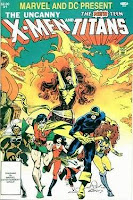Not a pop-culture reference to the title of a Middleman episode.
But it could’ve been…
So sorry I’m behind in the ranty blog. Between finishing the new manuscript and Texas Frightmare, the past few weeks have been a blur. I think I’m back on schedule now, though, and you should be getting very regular posts for the next few weeks.
I was trying to come up for a term for the idea I wanted to get across this week, and my girlfriend suggested the Scooby Ambiguity. Which fit perfectly and also helped me structure my little rant. As before, I’m hoping this becomes a standard term in storytelling.
Allow me to explain.
I’m sure most of you reading this are familiar with the basic plot of a Scooby-Doo episode. The gang rolls into town and encounters some kind of ghost or monster, usually three or four times. Then Velma finds some clues, applies some deductive reasoning, and reveals the ancient mummy to be Dr. Najib, the museum currator, in a disguise.
(For the record, there’s a fantastic article about Scooby Doo and secular humanism over here at Comics Alliance. No, really. It’s also makes some brilliant observation about character and setting, so check it out.)
Now, every now and then, in a Scooby episode or another story structured like it, we’ll have a moment of confusion, often near the end. We’ll get one fact that doesn’t match up. If Dr. Najib was in the costume… then who was the mummy we saw in the old tomb? There weren’t any other accomplices. The film projector was shut off. Could that have really been… the mummy?
You’ve probably seen this sort of thing in a lot of stories. It’s a pretty classic “…or is it?” device. One of the first times I remember seeing it in was the old X-Men/ Teen Titans crossover penned by Chris Claremont, when the ghost of Jean Grey shows up to warn the X-Men about Darkseid. Simply put, the Scooby Ambiguity is the one element that doesn’t fit in my established setting.
Now, when done right, this can be a wonderful thing. When handled with a light touch, it can give the audience a little thrill of excitement. It might even count as a minor twist.
When done wrong, though… well, your story falls apart
For example…
There’s a series of fairly successful books I read now and then. I’ll be polite and not name them, even though they’re kind of a guilty pleasure. I know they’re awful on several levels, and they always frustrate me for one reason or another, but I can’t help myself…
Anyway, the series is firmly grounded in the real world. Real locations, real law enforcement, real problems. It’s a lot like Scooby Doo, in fact. There are stories about zombies, mummies, and vampires, but in the end we get a solid, scientific explanation for these things, and more than a few times someone actually gets a mask pulled off.
In one of the books, the main character is a passenger on a jumbo jet with an unknown killer on the loose, and a huge stormfront is actually keeping them in the air, forcing them onward rather than trying to land.
Then, in the last hundred pages or so, we learn the killer is actually the physically manifested psychic energy of four passengers who are all projecting their Id out into the world.
No, I’m serious. Out of nowhere, in the middle of this reality-based story, the killer is a telepathically-created monster.
On the flipside, consider Dan Abnett’s ongoing book series about Gaunt’s Ghosts. It’s a sci-fi war story about soldiers during a massive interplanetary crusade. There’s guns, tanks, ongoing logistics and morale issues.
And every now and then… a miracle. Nothing gigantic, nothing that couldn’t be written off as odd coincidence or luck. Yet Colonel-Commissar Gaunt and his men are following the crusade path of Saint Sabbat, and they do seem to attract a lot of coincidences and a lot of luck. It never wins the day for them, and it never leaves much in the way of evidence, but it is there and the colonel-commissar is often left feeling a bit confused and in awe of it in the aftermath.
Y’see, Timmy, the Scooby Ambiguity works great as a thinly-connected side note, but the minute I make it a major element of my main plot, things start to crumble. Either I’m writing about a world where X can happen or I’m not. By its very nature, the ambiguity doesn’t fit within my established world, so making it a major part of my plot creates a jarring distraction that breaks the flow.
This isn’t to say I can’t have a story about homicidal psychic-energy monsters, but if I do it needs to be clear from the start that this is a world where such things can exist. If not, pulling some bizarre element out of left field is going to alienate a lot more readers than it impresses.
And alienated readers often find something else to do rather than finish reading.
Next time, not to sound morose, but I wanted to talk a bit about death.
Until then, go write.



